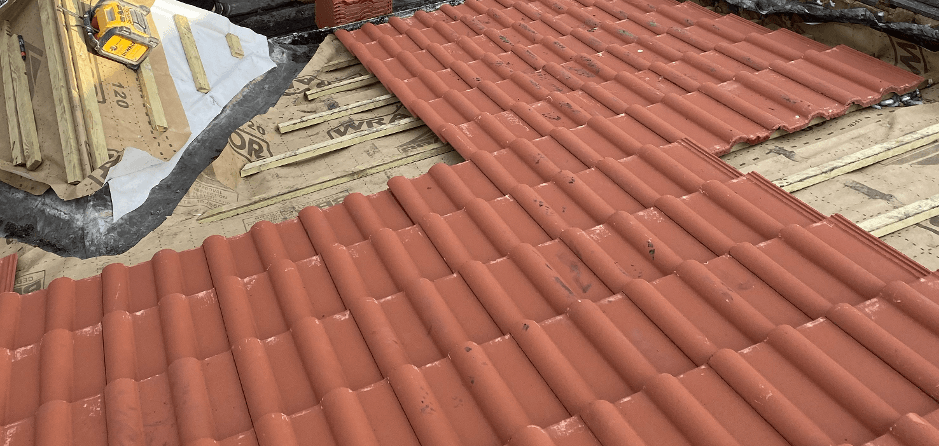5 Reasons Gutters are Important for your Home
Inspector Roofers Cincinnati advise that rain gutters play a crucial role in safeguarding your home and offering long-term benefits. Their multifunctionality includes keeping your belongings protected from rainwater, as well as preventing potential damage to your property. By installing rain gutters, you can save money and minimise the need for extensive maintenance. Discover the five primary reasons why investing in rain gutters is a wise decision for homeowners seeking to maintain a dry, clean, and valuable home.
Keep you Dry
Gutters serve a crucial function by preventing water from cascading directly onto individuals when entering or leaving their homes. They efficiently collect rainwater from the roof and direct it towards the ground, ensuring it does not disperse haphazardly. The primary objective of gutters is to redirect rainwater away from the roof, channeling it in a controlled manner towards the ground. By doing so, they effectively mitigate the risk of individuals being drenched by a deluge from above, offering a practical solution to managing rainfall around residential structures.
Create an Aesthetically Pleasing Look
When water streams along the sides of your house, it can create a messy situation by splattering dirt and debris onto the siding. As time passes, this accumulation can give your home an unclean appearance, necessitating frequent clean-ups. Moreover, the constant exposure to water can lead to the deterioration of paint, resulting in chipped surfaces that may require repainting in the future. However, with the presence of gutters, rainwater is effectively collected and directed away from the house, preserving its pristine appearance without requiring additional effort. Additionally, it is essential to maintain the cleanliness of the gutters themselves, and learning simple techniques for their regular cleaning can ensure they remain neat and functional. By implementing these measures, you can protect both the aesthetic appeal of your home's exterior and the overall condition of the gutters themselves.
Preserve Structural Integrity
The outer surfaces of your home, including the exterior and roof, are typically protected by layers of tar paper and plywood, but it's important to note that these materials are not completely waterproof. During the installation process of siding and shingles, small gaps can form and the materials may shift over time, potentially creating openings through which water can seep.
The infiltration of water can lead to significant problems. When water finds its way beneath the siding and roofs, it can saturate these areas, leading to deterioration and even rot. Over time, the affected materials can break down and develop cracks, compromising the overall structural integrity of your home. This gradual process can ultimately cause your home to deteriorate and, if left unaddressed, result in significant damage.
Fortunately, rain gutters provide a practical solution to mitigate these issues. By effectively channeling rainwater away from your home, gutters prevent excessive water accumulation along the exterior surfaces. By diverting the water, they help protect the siding and roofs from prolonged exposure to moisture, minimizing the risk of deterioration, rot, and subsequent structural damage.
By acknowledging the potential vulnerabilities of your home's exterior and understanding the protective function of rain gutters, you can take proactive measures to safeguard your property. Ensuring the proper installation and maintenance of gutters can effectively prevent water-related problems, preserving the integrity of your home and maintaining its overall condition over time.
Protect your Property's Foundations and Yard
When excessive water accumulates on your roof, it can potentially create pools that eventually overflow and cascade into your yard. This runoff can cause damage to your landscaping, particularly during heavy flows. Moreover, the presence of large volumes of water can lead to soil erosion, posing a risk to the stability and strength of your home's foundation.
Rain gutters play a crucial role in mitigating these issues. By effectively managing the flow of water, gutters help control the amount of water that is directed into your yard. This controlled distribution of water is beneficial for your grass, plants, and overall vegetation, as it prevents the detrimental effects of excessive water runoff.
To further protect your landscaping and foundation, the installation of a gutter system that redirects water away from your property is recommended. By strategically guiding the flow of water away from your landscaping, rather than allowing it to accumulate or seep into the soil near your foundation, you can prevent potential damage and maintain the stability of your home's structure.
By recognizing the impact of water runoff on your yard and foundation, and implementing a well-designed gutter system, you can effectively manage water flow, preserve the health of your landscaping, and safeguard the integrity of your home's foundation.
Limit the Occurrence of Mold
Excessive moisture accumulation on your home's exterior can create a favorable environment for the growth of mold, primarily due to high humidity levels and inadequate ventilation. When water leaks into the walls, the drywall can become a source of nourishment, serving as an ideal breeding ground for mold. The presence of mold not only poses challenges in terms of removal but can also have toxic effects on your home if not addressed properly.
To mitigate the risk of mold development, rain gutters play a crucial role. By effectively managing the flow of water, gutters help reduce the infiltration of excessive moisture into your home. This controlled diversion of water away from the exterior walls significantly lowers the chances of water seeping inside and creating an environment conducive to mold growth.
By installing and maintaining properly functioning rain gutters, you can effectively minimize the rush of water that could potentially penetrate your home's walls, thereby reducing the risk of mold formation. Taking proactive measures to prevent mold growth can help preserve the structural integrity of your home and safeguard the health and well-being of its occupants.
Contact
Inspector Roofers Cincinnati today for professional guidance on your property's roof and related fixtures, including siding, fascias and soffits and gutter systems,
You might also like

Book a Free Inspection
We will get back to you as soon as possible
Please try again later

Sitemap
Working hours
- Sunday
- Closed
- Mon - Sat
- Open 24 Hours
5036b Rapid Run Rd, Cincinnati, OH 45238, United States
Service area: Cincinnati and all surrounding areas

